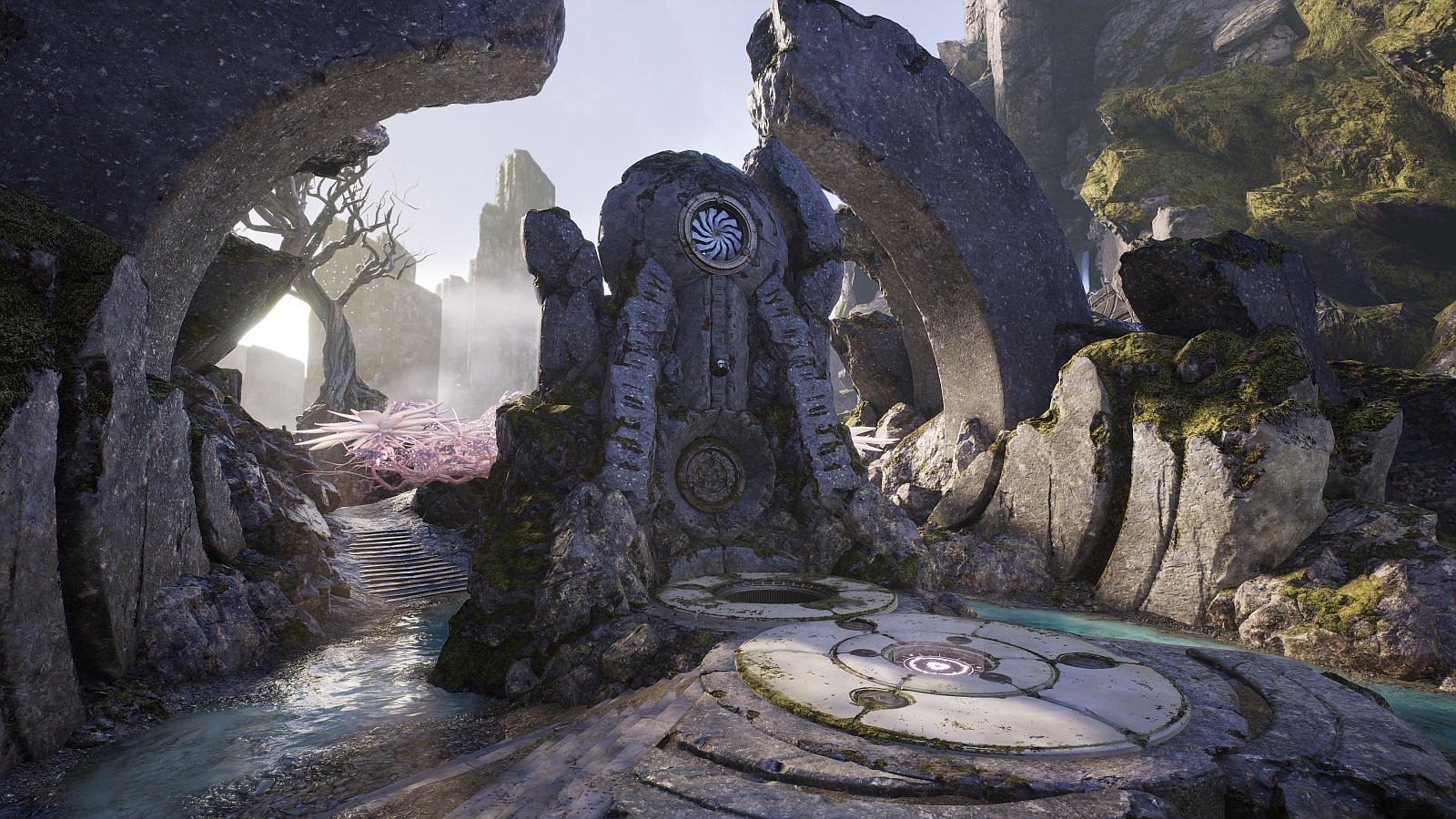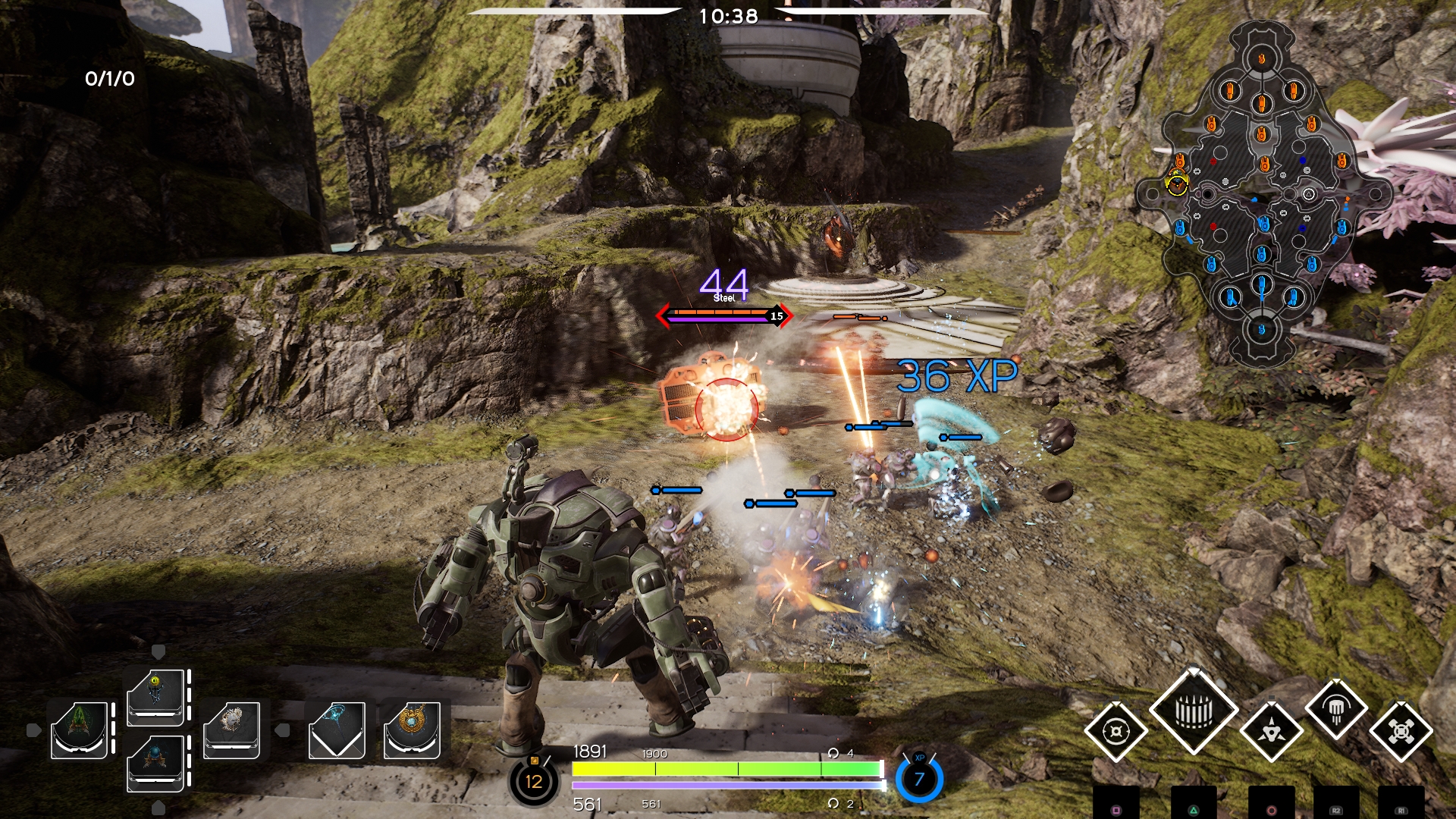
by James Davenport and Chris Thursten
A few weeks ago, Epic Games hosted first hands-on sessions for their new MOBA, Paragon, in the UK and the US. PC Gamer attended both. In the UK we sent Chris Thursten, who has spent the better part of the last three years playing and writing about Dota 2. In the US we sent James Davenport, who is yet to be converted to the ways of internet competitive wizard fighting. They each have very different things to report about Epic’s first foray into the genre.
MOBA veteran? Jump straight to Chris' expert take.
James: the MOBA newcomer
My name is Rampage. I’m an alien with an eight-pack. Think Cthulhu with more of an allegiance to leg day than forbidden knowledge. I can leap great distances, pull and toss massive slabs of earth, and slam the ground with enough force to reverse gravity for anyone walking on it. I carry myself forward on my fists, lumbering towards an inevitable conclusion: punching. My kingdom surrounds me, ancient ruins that speak to a lost civilization and the slow reclamation of nature. Trees split the stone, moss covers what it can, and only small shapes of careful geometry remain. It’s gorgeous. No one can take this from me. I inhale.
A robot assassin stabs me in the back and dances around while I desperately try to toss a stone and body slam the jerk. My life bar hits zero and I hear a whoop from across the room. “There’s a pro Dota player here,” someone says over the mic. I respawn at my base, but before I can take off, one of my teammates reminds me to buy some items and buffs. Items and buffs? Towers? Creep waves? Last hits? I suddenly have no idea what I’m doing. I’m playing a MOBA.

Good looks
Paragon’s slick visuals and familiar controls go a long way in my attempts to forget, shallow as that paints me. Instead of nudging a character around from an isometric birds-eye view, I am that character. The mouse-aim attack precision, the WASD movement, and third-person camera were instantly familiar. Every character, from a massive tank like Goliath to a lithe ranger like Twinblast, has a distinct responsiveness in attack and movement speed that feels intrinsic to their size and capability. Instead of watching events unfold from an isometric perspective, I felt directly responsible for them. Initially, the shooter controls and visuals made the more traditional MOBA concessions easier to swallow, even if they remain abstract and demanding.
For example, one of the biggest turnoffs in MOBAs are the in-game stores. Most are convoluted and daunting, especially for a panicky clicker like myself. Paragon’s card deck system chipped away at my fear. From the menu, I could assemble a deck of items and buffs to streamline the shop experience. By locking myself into certain deck builds, I give up the immediate variability a wide open item shop allows for, but I also don’t have to sweat tearing through a massive list of items with specific properties and uses.
Keep up to date with the most important stories and the best deals, as picked by the PC Gamer team.
Even so, one of my teammates walked me through adding a strange key to my deck that I planted in the forest some reason. It let me level up my card points pool quicker, but it’s not something I would do intuitively—hell, most of the MOBA mechanics aren’t things I would do intuitively, which runs counter to how the game is presented and controlled. It’s an abstract mechanic there only because other MOBAs have done something similar.
I just can’t help but think there’s a more interesting, accessible way to express mechanics like this in a game that controls like a shooter.

But no hooks
After five or six matches, my initial optimism had dissipated entirely. I started failing for the same reasons I always do in MOBAs. I might be able to aim precisely, I might feel like I’m more agile and aware than my opponents, but because I’m not keeping up with XP, forest buffs, character matchups, and ideal item shop purchases, I fall behind. Paragon turned into a familiar kind of frustration, the same I felt with Dota 2, Smite, and League of Legends many times before.
The detailed character models may facilitate the fantasy of playing as a meathead Cthulhu, a horrifying Jim Henson-esque cat person in a mech, or a swift robotic assassin, but traditional MOBA mechanics are still the priority in Paragon. It’s disappointing because I was hoping to play a MOBA that catered to the character action and shooter audiences, a game that focused on twitch mouse-aim more than meta mastery, something I could hop into a few times a year without reading months of patchnotes and still enjoy, but that’s not what Epic is going for. I love how it looks and I love the character control, but Paragon isn’t trying to be anything other than a pretty MOBA. That’s okay. I’ll just keep my face pressed to the genre glass and wait.
On the next page: Chris experiences the game very differently.
PC Gamer is the global authority on PC games—starting in 1993 with the magazine, and then in 2010 with this website you're currently reading. We have writers across the US, Canada, UK and Australia, who you can read about here.


